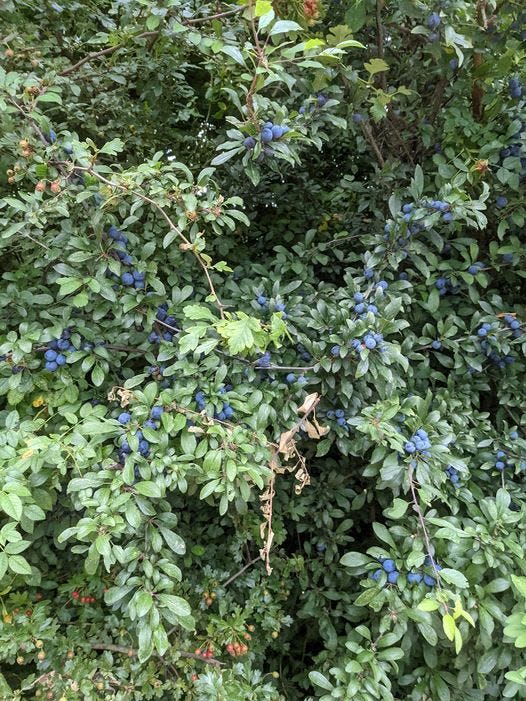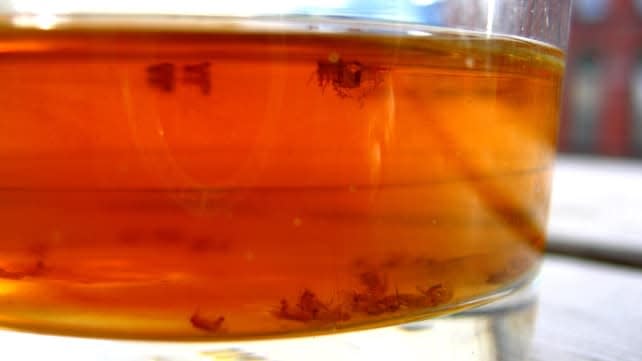A Stroll Through the Garden: Drosophila suzukii attacks our fresh fruit
A number of years ago Sharon and I went to a local fruit producer and purchased a pail of fresh fruit. Sharon and I were going to process the fruit and put some up and share with our family and friends. The problem was that the fruit was so loaded with fruit flies that they were almost unusable.
Imagine going through a whole season taking care of the fruit you are trying to raise and not being able to harvest the fruit because this fruit fly had taken over your patch of fruit. I saw the disappointment in this grower, and I felt bad for all the expense and losses he experienced. Normally a grower can only afford to go through a few years like that and then say the little monster you are looking at won.
Keep in mind that one Drosophila suzukii that had one clutch of eggs hatch out will produce 300 more flies. These fruit flies go through their life cycle quickly, but that also means in one season you can have 13 generations of this monster. If you do nothing to slow down or control this monster, you could wind up with 2.70208224e+26. In English it’s over 27 septillion Drosopilla suzikii fruit flies in one season. Wow! If you converted this insect into an army, any opponent would be overwhelmed.

Years ago, I said I would try to help, and I did not find any solution that would adequately solve the problem. Our local small fruit growers started experiencing this Drosophila suzukii in 2012 including Holmes, Wayne, and Medina locally and nine other Ohio counties. Now we are looking at 37 counties of our 88 in Ohio. If we are growing cherries, raspberries, blackberries, blueberries, grapes, peaches or plums, you will face a full-on assault of your ripe or close to ripe fruit. Strawberries, pears, apples and cherry tomatoes are a secondary menu item for this pest.
If you like fruit, you should take note that Michigan recorded 50% losses in blueberries, brambles and strawberries by growers in 2012. Since 2008 and first identifying this fruit fly as a nation, we are experiencing $500 million annually in damages.
One of the keys to any pest management system starts with identification. The adult male spotted wing drosophila has spots on its wings and two dark bands on its front legs. Other male fruit flies don’t. Adult female fruit flies have a saw-like rear leg which she uses her legs to shred almost-ripe fruit to lay their eggs before other fruit flies arrive. You can see it with a 40x magnifier.
The first thing you need to do is identify the pest before you try to manage it. Get a clear plastic jar or cup with a red duct tape strip. Punch holes through the sides near the top of the jar on one side. Add one inch deep of apple cider vinegar with one drop of dish soap. Clear the jar out weekly and see what you have in your trap. Because of the fertility of this insect, some experts say one fruit fly is too much.

To manage the insect, you first need to harvest the fruit. Once the fruit is picked keep your fruit in a cooler. Destroy all culls or any damaged fruit, making sure that nothing that will attract this insect is left. Place the prescribed netting over the rows of fruit protecting the plants. Follow a prescribed spraying program. Some essential oils like thyme, leptospermum, erythritol, sucrose, chitinase from euphorbia, perilla aldehyde and more have shown to be effective at a number of levels to combat this insect. If you place a sample of your fruit in a plastic bag with a salt and warm water mix and wait 15 minutes, you will force the larvae out of the fruit.
Hope you have a great stroll through your garden this week. If you see any challenges let me know by dropping me an email at ericlarson546@yahoo.com. I shall hook up my blog to ohiohealthyfoodcooperative.org soon. For all the folks that asked for a perennial dividing list, I’m working on a list as comprehensive as I can get. Thank you for all the interest. We reached some records with this column. Thank you for your participation.
Eric Larson of Jeromesville is a veteran landscaper and gardening enthusiast and a founding board member of the Ohio Chapter of Association of Professional Landscape Designers. He encourages your gardening questions by sending an email to ewlarson546@yahoo.com.
This article originally appeared on Mansfield News Journal: Combatting the spotted wing drosophila

